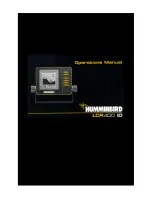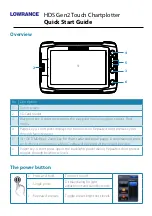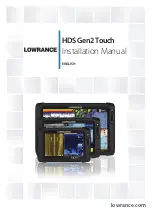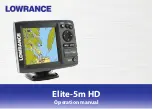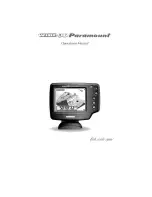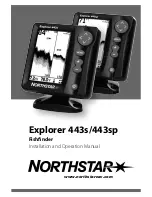
“Transducer”. Note: An adapter (AD-4) is available to allow use of an old waterproof
(BNC) transducer with the LCR, but be sure that the transducer is a 16degree. A 32-
degree transducer cannot be used.
A 11/8” hole must be drilled to pull through the transducer connector. After drilling the
hole, pull the transducer connector up through the hole. If you are installing two units,
both transducer connectors can be pulled through this 1 1/8” inch hole. Next, push the
power cable wires down through the hole. A hole cover has been provided which will
dress and hold the wires. Install the hole cover after determining the necessary wire
length from the hole.
The power cable has a red lead to the positive (+) post and the black lead to the
negative (-) post. Install a 1 amp fuse between the red cable and positive post of your
12-volt battery.
If a fuse panel is available, we recommend wiring the power cable into the fuse panel.
Note: The LCR must be fused separately from any other accessory.
Your Angle-Lock connectors can only be plugged in one way. Position the connector so
the letter P or T can be read and the 90 degree bend is pointed downward. Push the
connector in as far as it will go. Turn the positive locking ring as far as it will go
clockwise until you feel it lock. Locking ring as far as it will go clockwise until you feel it
lock. Your connector is now locked into place.
Note: For easy access to the connectors, simply loosen the mounting knobs and tilt your
LCR forward. The connectors are now in full view and easy to plug or unplug.
BEFORE BEGINNING
HOW THE LCR400ID WORKS
HOW THE LCR400ID WORKS
There are two main components to an LCR400ID installation: The transducer, which
Summary of Contents for LCR 400 ID
Page 1: ......

